Was Jan Peek a myth? Was a Native American named Black Kettle the original settler of the land we now call Peekskill?
Stay tuned…
Was Jan Peek a myth? Was a Native American named Black Kettle the original settler of the land we now call Peekskill?
Stay tuned…

Peekskill Brewery, a beloved staple in the heart of Peekskill bid its final farewell to friends and the community on November 22, 2023, marking the end of an illustrious 15-year journey that began on Saturday September 6, 2008. From its inception, Peekskill Brewery was more than just a place to enjoy a pint; it was a vibrant community hub with live music, a haven for craft beer enthusiasts, weekly trivia nights and much more.
As we remember Peekskill Brewery, we recall the bustling ambiance of its taproom with it’s many servers and workers that became our friends over the years. But we would be remiss if we did not mention the forever young and smiling Henry behind the bar who served every single one of us during his fourteen years at Peekskill Brewery.
The brewery was renowned for its exceptional array of craft beers such as the Paramount Pale ale, brewed at their first location on Water street and their notable one time releases like Pruno and Kneel Before Zod, with every new brew over the years a testament to the skill and passion of its many brewers and creators.
These beers were not just beverages; they were stories in a glass, narratives of creativity, dedication, and a deep love for the art of brewing.
Peekskill Brewery was also a cornerstone of the community, hosting events that brought people together and championed local talents. It was a place where friendships were forged over shared meals and new memories were created. The brewery’s impact extended beyond its walls, contributing to the local economy and setting a high bar for craft brewing in the region.
As we bid adieu to this iconic establishment, we acknowledge the indelible mark it has left on the hearts of those who walked through its doors. Peekskill Brewery’s legacy will live on in the stories shared by its patrons, the inspiration it provided to aspiring brewers, and the community spirit it fostered. It was not just a brewery, but a cherished chapter in Peekskill’s story, and its memory will be savored for years to come.
Thank you, Peekskill Brewery, for 15 remarkable years of hops, heart, and home. Cheers to the memories, the laughter, and the beers. You will be dearly missed.
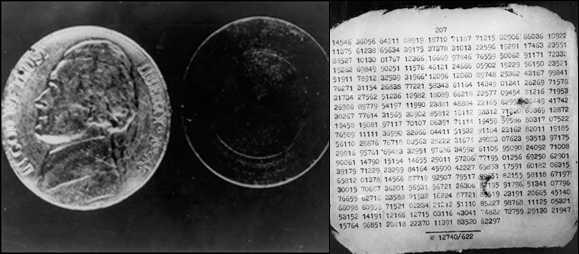
During the Cold War, the tension between the U.S. and the Soviet Union was palpable. Espionage was at its peak, and both nations were deeply involved in covert operations to outwit each other. One such operation was the Hollow Nickel Case, which highlighted the role of Peekskill, New York, and introduced the world to the intricacies of the Soviet Illegals Program.
In 1953, Jimmy Bozart, a Brooklyn newspaper boy, stumbled upon a nickel that felt peculiar. It was lighter and emitted a strange sound when dropped. On prying it open, he found a message, reduced to the size of a small cornflake, arranged in groups of single-digit numbers. The coded message, once deciphered, was revealed to be Hayhanen’s official welcome to New York, encrypted and transferred to microfilm.
After the FBI’s Agent Louis Hahn secured the mysterious nickel and its concealed microfilm, the agency embarked on a quest to decipher its origins and the significance of the numbers within. While the coin’s front showcased a 1948 design, its reverse was intriguingly from a period between October 1942 and the end of 1945, identifiable by the unique copper-silver alloy used during those years. The microfilm displayed a series of numbers: sets of five digits organized into seven columns of 21 sets each, and another three columns containing 20 sets, summing up to 207 sets of five digits. However, a decoding key was conspicuously absent. For almost four years, the FBI grappled with uncovering the nickel’s origins and the encoded message’s meaning. The puzzle began to unravel in May 1957 when KGB operative Reino Häyhänen, also known under the alias Eugene Nicolai Mäki, expressed his desire to defect.
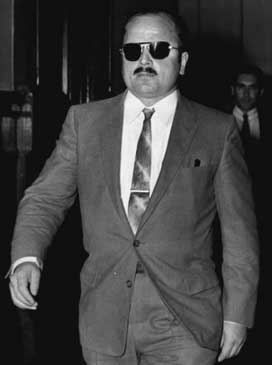
Reino Häyhänen was born on May 14, 1920, in the small village of Leningrad Oblast, which was then part of the Russian Soviet Federative Socialist Republic. As he grew amidst the political upheavals of the early 20th century, Häyhänen was introduced to the covert world of espionage at a young age.
Recruited by the Soviet intelligence agency, Häyhänen underwent rigorous training and was eventually dispatched to the United States as part of the Soviet Illegals Program during the Cold War. Operating under various pseudonyms, with “Eugene Nikolai Mäki” being one of his primary covers, he worked diligently, gathering intelligence and passing it to his superiors.
A pivotal figure in Häyhänen’s espionage career was his handler, Rudolph Abel.
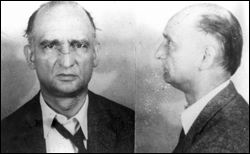
Abel was a master spy for the Soviet Union. He was known for his ability to blend in and assume multiple identities, making him a valuable asset to the Soviet intelligence community. Abel was responsible for overseeing and guiding operatives like Häyhänen in their missions, ensuring the smooth flow of information back to the USSR. With his deep understanding of the nuances of intelligence work and an ability to manage operatives efficiently, Abel became one of the most prominent figures in the world of Cold War espionage.
The FBI traced the hollow nickel back to a Soviet spy named Reino Häyhänen, who was operating under the alias Eugene Nikolai Mäki. Häyhänen had been living in Peekskill, New York with his wife. It was a domestic disturbance there that drew attention to him and began to unravel his cover.
Shortly before his defection, Hayhanen and another spy had driven up to Bear Mountain State Park and buried five thousand dollars in cash beside a secluded stretch of hiking trail. He was instructed to return at a later date, dig the money up, and give it to Helen Sobell, the wife of Morton Sobell, another unmasked Soviet spy convicted alongside the Rosenbergs. Instead of handing over the money, Hayhanen dug it up and used it as a deposit for a property he leased in the fall of 1955 in Newark, New Jersey.
The Soviet Illegals Program was an intricate intelligence initiative orchestrated by the Soviet Union during the Cold War. Under this program, trained spies were dispatched to foreign nations without any official cover or direct ties to the Soviet government. These “illegals” would embed themselves into their host societies, often assuming completely new identities, and live seemingly ordinary lives. Beneath this façade, they conducted covert operations, gathered intelligence, and relayed crucial information back to their Soviet handlers. The program exemplified the depth and sophistication of Cold War espionage, highlighting the lengths nations would go to gather intelligence on their adversaries.
Rudolph Abel was one such “illegal.” Under various aliases, he operated in the U.S., gathering intelligence and handling other spies like Hayhanen. His expertise in covert operations made him invaluable to the Soviet Union. However, his capture and subsequent trial unveiled the vastness and depth of the Illegals Program.
During his trial, Abel was defended by James B. Donovan. Donovan’s representation of Abel was not just a legal battle; it was a testament to the principles of justice, even during times of heightened political tension. Tom Hanks later portrayed Donovan in a movie, highlighting the lawyer’s commitment to ensuring Abel received a fair trial.
Sensing that the walls were closing in, Hayhanen decided to defect to the West and give up Abel and the program. He provided the authorities with crucial information about Soviet operations in the US, leading to the capture of other agents, including a top Soviet spy involved in the hollow nickel operation. At first, the FBI did not believe Hayhanen due to his history of being a drunk. Hayhanen accompanied agents to his home on the outskirts of Peekskill and showed them a secret compartment within the home. At this point, the FBI was convinced he was who he said he was and that they had uncovered a Soviet ring of illegal citizens in the United States.
The connection to Peekskill was made clear with it’s inclusion in The Mitrokhin Archives. The Mitrokhin Archives are a collection of notes taken by Vasili Nikitich Mitrokhin, a former KGB archivist who defected to the UK in 1992. These archives provide a detailed record of Soviet intelligence operations, offering a revealing glimpse into the inner workings of the KGB during the Cold War. One such account from the archives states:
Early in 1956 the police were called to the home of the
“Makis” home at Peekskill in Hudson Valley, where they
found both Hayhanen and his wife drunk; Hayhanen had a
deep knife wound in his leg, which he claimed was the
result of an accident.
One of the most significant episodes in Häyhänen’s espionage journey in the Peekskill area occurred at Bear Mountain State Park. Before a series of tumultuous events that would eventually lead to his exposure, Häyhänen, along with another operative, drove to this picturesque location. There, they buried a considerable sum of five thousand dollars in cash beside a secluded hiking trail. The money was intended to be retrieved later and delivered to Helen Sobell, the wife of Morton Sobell, a convicted Soviet spy. However, when the time came, Häyhänen dug up the money, but instead of handing it over as directed, he kept it for himself. This act of defiance and the buried secrets of Bear Mountain would later play a pivotal role in unraveling the vast web of Soviet espionage in the United States in the years after World War 2.
Here is the excerpt from “The Sword and the Shield: The Mitrokhin Archive and the Secret History of the KGB”
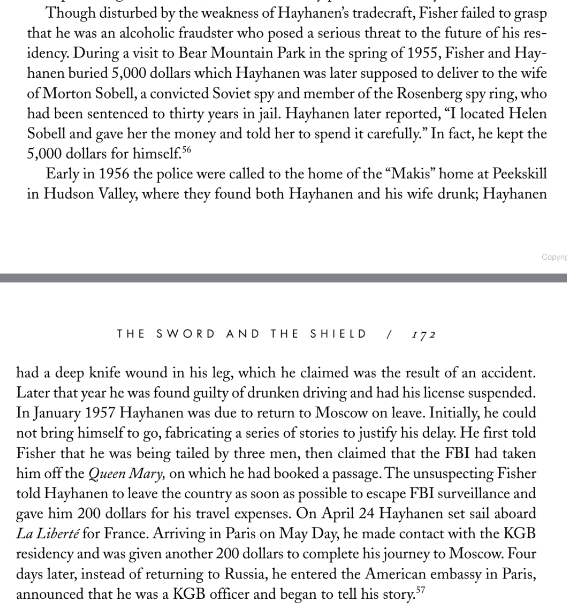

It is with a heavy heart that our first blog post about Peekskill’s Paul Rueben’s has to be today. He passed away on Sunday July 30th, 2023.
Paul Reubens, best known for his beloved character Pee-wee Herman leaves behind a legacy of laughter and joy. Born on August 27, 1952, in Peekskill, New York, Reubens became an iconic figure in American popular culture, turning his quirky, childlike character Pee-wee into a household name in the 1980s. His television show, “Pee-wee’s Playhouse,” was a touchstone for a generation of children, and the film “Pee-wee’s Big Adventure” became a cult classic. Through his uncanny ability to capture innocence and humor, Reubens made a deep impact on the entertainment industry. Today we mourn the loss of an unparalleled artist, but celebrate the many moments of joy and wonder he brought to us all.
In a 2016 interview during an Alamo Drafthouse live stream for his last movie, Pee-wee’s Big Holiday, he had told a story about his latest visit to Peekskill for a friend’s funeral. He saw Plan 9 from Outer Space on the Paramount Center for the Arts marquee. This would have been in 2015.
All of us in Peekskill would have liked to see Pee-wee in town one more time before he passed.

Pee-wee was Peekskill’s finest. We’ll miss you.
Tweet
Earlier this week, the 30th anniversary of the Peekskill Meteorite came to pass. It was mostly uneventful save for a few postings on the local Facebook groups one of which you can find here: Historic Peekskill NY in Pictures. The post is as followed along with a photo taken by former Peekskill Mayor(R), John G Testa:
“Good thing I had my trusty yearbook camera with me on October 9, 1992. 2017 marks 25 years since that famous 4.4-billion-year-old meteorite landed on a car in Peekskill. It hit on Wells Street next to the school district Administration Building, and just around the corner from my house! Only a few hundred feet away as the crow flies. It could have hit someone’s house or worse. That 1980 Chevy Malibu became famous overnight and the meteorite was worth close to $100K! The car sold for $10K and is shown throughout the world. Specimen samples of the meteorite can still be seen being sold on EBay and other sites. A large piece is on display at the national Museum of Natural History of the Smithsonian on the National Mall in Washington, D.C.”
Learn more about the car here at it’s website, Meteorite Car.
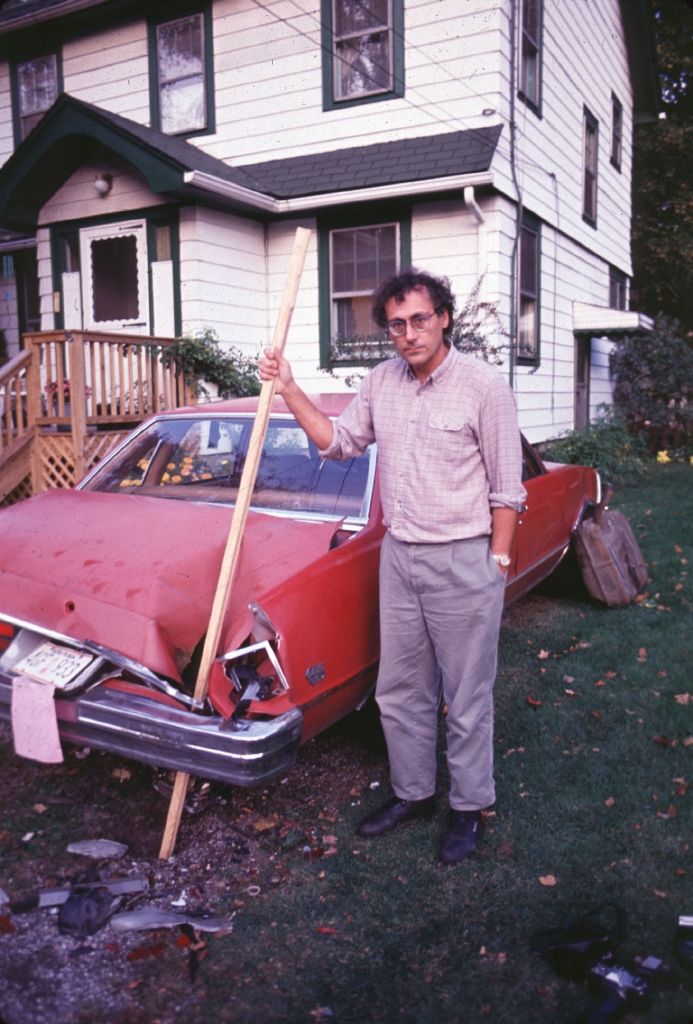
Michelle Knapp’s 1980′ Chevy Malibu
In the wake of the recent passing of the iconic Pee Wee Herman, the image of stars falling from the heavens serves as a metaphor for the loss of such a Peekskill luminary. There are moments in history when the vastness of space makes an abrupt and dramatic entry into our daily lives, much like the indelible mark left by great personalities on our collective consciousness. One such cosmic event occurred on the evening of October 9, 1992, when the night sky over the Eastern US was suddenly ablaze with the fiery descent of a meteorite. That meteorite, which would later be known as the Peekskill meteorite, holds a unique place in both science and popular culture. Among its many resting places, a fragment resides in the famed Griffith Observatory in Los Angeles.
The Peekskill meteorite’s entry into the Earth’s atmosphere was not a stealthy one. Numerous witnesses from Washington D.C. to Pennsylvania reported a brilliant green fireball streaking across the sky. But what set this event apart from others was that it was caught on camera – 16 times! This became one of the most photographed meteors of all time.
After traveling through space at a cosmic velocity of 8.8 miles per second, the meteorite crashed into a red Chevrolet Malibu parked in Peekskill, New York at approximately 7:50 pm EDT. The owner, Michelle Knapp, heard a crash and stepped out to find a large, warm rock beneath her damaged car. With the immediate realization of its potential significance, she preserved the rock and the damaged car, both of which would later become iconic artifacts of this event.
Eye-witness accounts indicate that the fireball associated with the Peekskill meteorite first appeared over West Virginia. The fireball, which traveled in an approximately northeasterly direction, had a
https://aquarid.physics.uwo.ca/publications/EMP-peekskill.pdf
pronounced greenish colour, and attained an estimated peak visual
magnitude of -13
The meteorite itself weighed 26.4 pounds (12 kilograms) and was primarily composed of olivine and pyroxene. Such meteorites offer invaluable insights into the conditions and processes that shaped our early solar system. The Peekskill meteorite is estimated to be 4.4 billion years old and small specimens of the Peekskill meteorite sell for approximately $125 per gram.
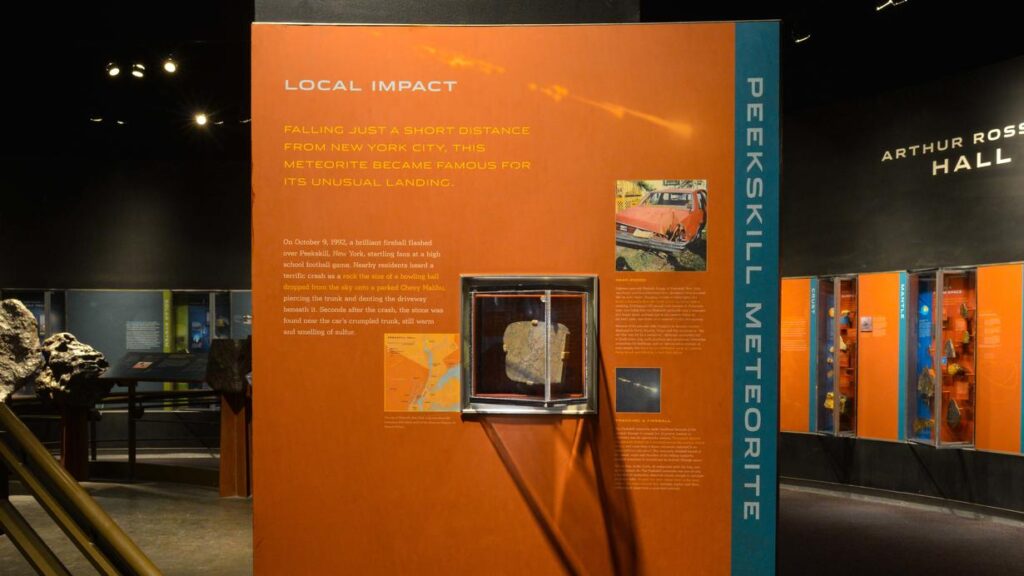
Peekskill Meteorite at the Griffith Observatory in Los Angeles.
The car, accompanied by the main piece of the meteorite which has a weight of 890 grams, resides in the Macovich Collection of Meteorites. You can also find other fragments from this meteorite showcased in Chicago’s Field Museum, the American National History Museum, and the Smithsonian. Notably, the photo referenced above is on display at the Griffith Observatory in LA.
The Peekskill meteorite’s sudden descent from the stars, its cinematic capture, and its eventual resting place like the Griffith Observatory serve as reminders of the universe’s vastness and the serendipitous moments that tie us to the Peekskill and the stars. Until next time…
If you’re thinking about visiting Peekskill, bring your own friends.
Read about the most photographed meteorite!
Tweet
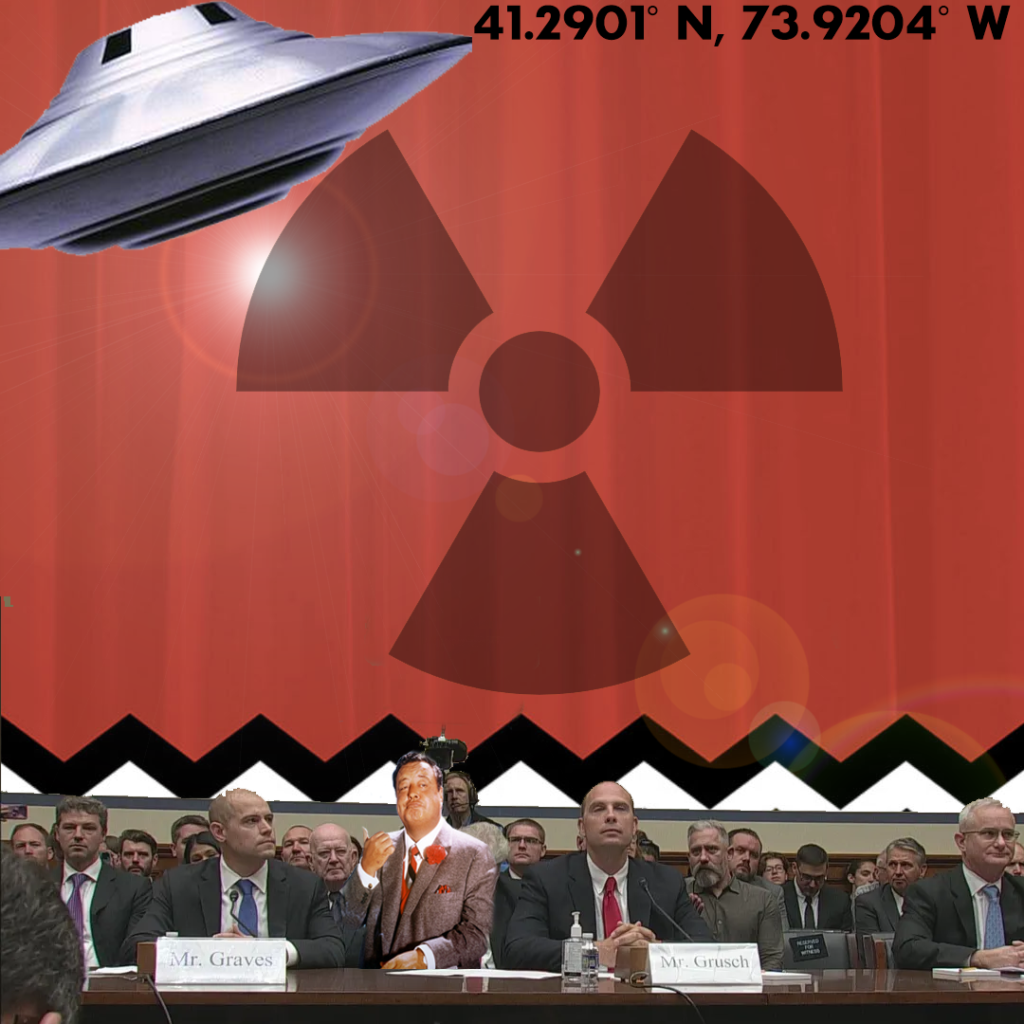
On July 26th, 2023, a hearing was held in Washington D.C. on the topic of Unidentified Aerial Phenomena. Before the hearing, a 177 page briefing memo was given to the representatives present. This briefing memo consists of a chronological telling of publicly available information pertaining to an apparent cover-up of UAPs and aliens/NHI (Non-Human Intelligence) by the United States Government. There are a few well known people and events mentioned in the briefing memo that are connected to Peekskill: Jackie Gleason, Indian Point, and the Hudson Valley UFO sightings of the 1980’s. So how on Earth does Peekskill fit into the UAP mystery? Let’s start with the Hudson Valley UFO. It is referenced on page 60 of the briefing memo.

The Hudson Valley UFO or, UFOs as it seems there was more than one incident was a series of sightings that began in 1983 and lasted until 1986 according to the book, Night Siege: The Hudson Valley UFO Sightings. We have also obtained testimony over the years from many local residents who saw it themselves as well as reporting by the NY Times which covered the sightings starting in 1983 and continued through the end of the decade.
Bill Hele, chief meteorologist for the National Weather Corporation… said he had sighted an object while driving south from Peekskill on the Taconic Parkway…
https://www.nytimes.com/1983/04/17/archives/on-the-trail-of-ufos.html
The Hudson Valley UFO was often described as a massive, silent, boomerang-shaped or V-shaped and the size of a football field. This report dated April 17, 1983 from the NY Times described it as “a series of lights 10 to 15 degrees above the horizon, ”perhaps three times brighter than a first magnitude star,” six of them on an axis, two or three at a 45-degree angle forming ”a checkmark.” It would hover in the sky, sometimes for several minutes, before moving off at great speed.
Many of the sightings took place at night, with the UFO appearing over busy stretches of highway such as Route 202/Crompond Road, Taconic State Parkway, Interstate 684, Route 9 between Croton and Peekskill. Many of the drivers who saw it that night, including police officers and pilots, pulled to the side of the road and exited their cars to get a better look. In one instance, we were told that a mother and son observed the object while driving north on Route 9 from Croton. The mother to this day still refuses to acknowledge what she saw while the son believes it to be otherworldly.
One bystander we interviewed, recounted how he and friends had been casually drinking beers at the Peekskill waterfront during the time of the UFO sighting. Remarkably, he noted that the police that were there seemed to not be bothered by him and his friend partying, their attention wholly consumed by what he described as a silent craft that was as big a football field. This Peekskill riverfront event was viewed by hundreds of people that night. Others have told us that at one point it looked as if the craft took off at “warp speed”, instantaneously, and in a manner not consistent with any known aircraft at that time.
The most well known and mostly rejected explanation reported for the Hudson Valley UFO sightings was featured in the NY Times by a NY State Trooper who claimed that not him, but another Trooper, tracked the object to the Stormville Airport. “The trooper spoke to a couple of the pilots, and they’re getting a big kick out of it.” He refused to give the name of the trooper or of the pilots the trooper spoke to.” This was not a sufficient explanation so it was about time to call in Dr. J. Allen Hynek.
Peter A. Gersten, a criminal lawyer who has made sightings from his Peekskill apartment, has organized a meeting…
https://www.nytimes.com/1984/08/25/nyregion/strange-sights-brighten-the-night-skies-upstate.html
Among those attending will be Dr. J. Allen Hynek…
Dr. J Allen Hynek may be familiar to some and best known for his work on USAF Project Blue Book. He began his assignment as a skeptic mostly explaining sightings of UAP as natural events and misidentifications of aircraft. As his investigations continued, he was forced to put out more and more contrived explanations by the USAF that went against what he knew to be true: That some of these sightings had no natural explanation. By the end of his assignment he was absolutely convinced of a cover-up by the Air Force and the United States Government regarding UAPs.
The Westchester sightings are sufficiently unusual to cause people to look closely for a natural explanation,” he said. ”If it can’t be found, they will go down as unsolved.
https://www.nytimes.com/1983/04/17/archives/on-the-trail-of-ufos.html
Dr. Hynek called the people he interviewed about the Hudson Valley UFO to be “credible people reporting credible things.” No official explanation was ever given. For the Hudson Valley UFO. To this day we continue to meet people who witnessed the object. “Silent,” “Moved extremely fast,” and “as big as a football field” are the descriptions we hear the most.
Our next local UFO encounter reported in the briefing memo took place at the Indian Point Nuclear Power Plant on July 24, 1984 just a month after the Hudson Valley UFO. While not located in Peekskill, Indian Point is situated on the site of an old amusement park along the Hudson River a half mile across the town line in Buchanan. Indian Point is referenced on page 60 of the briefing memo. It’s just one of the many instances of UAPs showing an interest in nuclear power plants and weapons.

An earlier and mostly unknown report of UFOs at Indian Point and the Hudson Valley comes from the October, 11 1976 edition of the NY Times from an article titled “Rockland U.F.O. ‘Invasion’ Starts Round of Explanations” “Two enormous upside‐down soup bowls” hovering over the Ramapo Mountains and “Several U.F.O.’s have been reported over Stony Point, just across the Hudson River from the Indian Point nuclear reactors.” Further in the report, a now familiar Tic-Tac shaped UAP is reported by a woman named Barbara who “observed several cylindrical flying objects with red, green and white flashing lights, which hover awhile, then turn sharply and disappear.” Sound familiar?

The report continues with an explanation for these sightings having been helicopters or planes reflecting the rays of the sun. Years later, the the briefing memo tells of a much more closer encounter than Stony Point.
We recall a UFO publication from the early 1990s, possibly summer 1994 that had a feature on the Indian Point UFO. At the time of writing this we are unable to locate the magazine or the title of it. Within the magazine it is written that there was a meeting held at Connolly’s Bar, now known as The Birdsall House and the Westchester Diner regarding the Indian Point UFO.
Now we come to the last and arguably most entertaining connection between the UAP hearing and Peekskill. It begins with none other than the legendary Jackie Gleason who is referenced on page 70 of the briefing memo.

Jackie Gleason is best known for his role as Ralph Kramden on “The Honeymooners” and he had a longstanding interest in UFOs. This is another not exactly in Peekskill but just across the town line story, depending on what story you believe. More on that at the end of this.
His interest in UFOs manifested itself in a unique piece of property that Gleason owned which has become known as “The Mothership,” the home is an unusual, round structure designed to resemble a UFO. The house was constructed in the 1950s, around the same time Gleason was starring in “The Honeymooners” and built by Frank Lloyd Wright. The main home is dome-shaped, while the guest house is designed to look like a UFO. The guest house, in particular, features round windows, round walls, and is elevated off the ground, to give it an appearance of a spaceship.
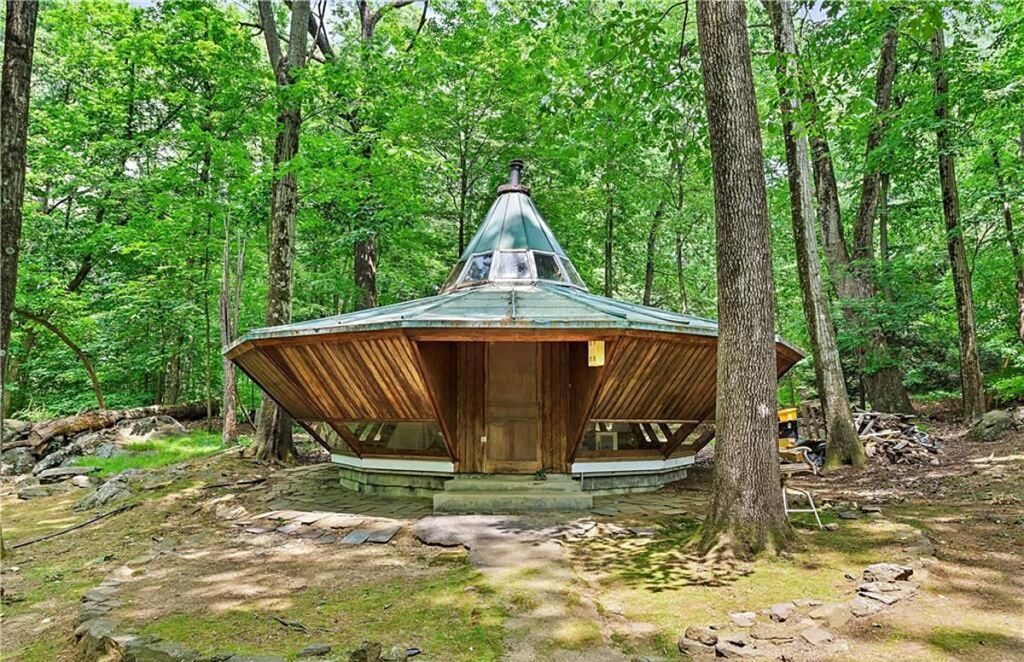
Anthony Acocella – Acocella Photography
It’s worth noting that Gleason’s fascination with UFOs went beyond architecture. He was known for his extensive library on paranormal topics and was even rumored to have had a discussion with then-President Richard Nixon about extraterrestrial life. Now comes the fun part:
In The Secret History of Twin Peaks by Mark Frost, it is said that Richard Nixon once asked Jackie Gleason if he wanted to see the alien bodies from the UFO crash in Roswell, New Mexico. Without hesitation, Gleason said yes.
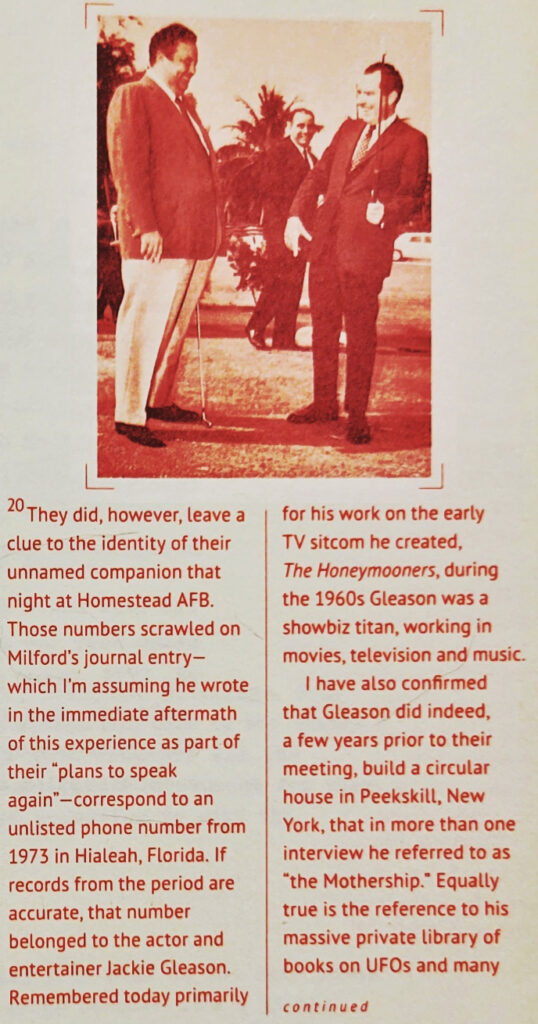
This would make Peekskill a part of the Twin Peaks universe. Until next time…
If you’re thinking about visiting Peekskill, bring your own friends.
I just read this about Peekskill!
Tweet
Discover Peekskill!
Walk the yellow brick road with Pee-wee Herman and his friend, Mel Gibson.
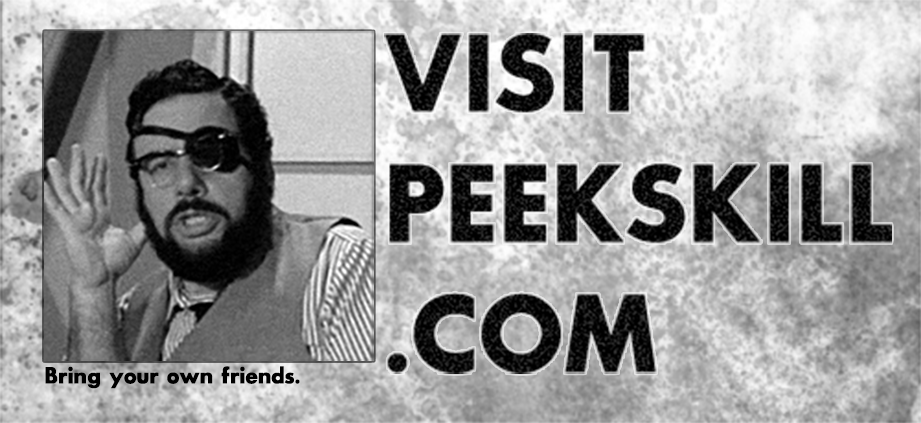
If you’re thinking about visiting Peekskill, bring your own friends.